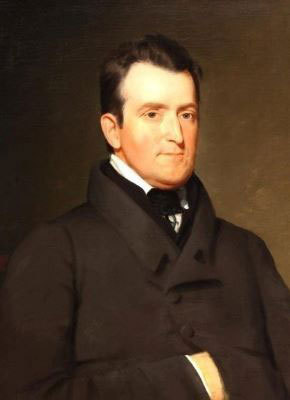
John Johnston was born on March 25, 1775, in Ballyshannon, County Donegal, Ireland, to Stephen and Elizabeth Bernard Johnston. His father was Scottish, his mother a Huguenot immigrant from France. John left Ireland at age 11 with his tutor, an Anglican priest, and settled in the Shearman Valley, Cumberland (now Perry) County, Pennsylvania.
LINK TO ENDNOTE: What is a Huguenot?
LINK TO ENDNOTE: What is an Anglican priest?
Five years later his parents and siblings came to the United States, settling in Tuscarora County, Pennsylvania. John's first job was in John Creigh's store in Carlisle, Pennsylvania.
At age 17, John traveled west to bring supplies to General Anthony Wayne's forces at Fort Piqua, a forward-supply post in the southwest Ohio Country. John was impressed with the fertility and beauty of the Ohio Country along the Great Miami River.
Wayne's mission was to defeat the Northwest Indian Confederation to allow white settlement in the Northwest Territory, which included Ohio. The Battle of Fallen Timbers was fought on August 20, 1794, which led to the Treaty of Greenville on August 3, 1795. With this treaty, the Native Americans ceded most of the land that would become the state of Ohio in 1803. It also ended the "Indian" Wars in that territory and allowed the white settlers to safely move there.
LINK TO ENDNOTE: What Native-American tribes comprised the Northwest Indian Confederation?
In 1795, John moved to Philadelphia, the United States capital from 1790 to 1800. He found employment as a clerk in the War Department under Henry Dearborn, the first Secretary of War.
While in Philadelphia, John lodged in boarding houses. About 1800, he lodged at the house of Rosanna Robinson, a Quaker widow, and her family. Rosanna had a daughter, Rachel, 10 years younger than John.
LINK TO ENDNOTE: What is a Quaker?
John lived with the Robinsons for 2 years and fell in love with Rachel. John asked for her mother's consent to marry, but was refused. On July 12, 1802, 27-year-old John, an Episcopalian, and 17-year-old Rachel, a Quaker, eloped to Lancaster, Pennsylvania.
The Rev. Gottfried Muhlenberg, a Lutheran minister, married them in a German ceremony on July 15, 1802. The honeymoon was a nearly 600-mile horseback journey to Fort Wayne in the Indiana Territory.
John's impressive conduct and high standing in the War Department earned him a federal appointment on July 1, 1802, as the factor (store-keeper) at the Fort Wayne Indian Agency.
During his time at Fort Wayne, John became familiar and knowledgeable with the customs of the Native Americans who came to conduct business. Rachel's Quaker background helped her husband better understand and value the various native cultures.
John's role was to ensure that the natives traded with the Americans rather than the British, who still maintained forts in Canada. He oversaw the distribution of government supplies of food, clothing, and weapons.
While at Fort Wayne, John also learned simple surgery and was appointed assistant surgeon. In distributing goods and providing medical care to the natives, John was introduced to many important native chiefs.
On September 6, 1804, John purchased land that would become his Upper Piqua farm in the northern part of the Miami Valley of Ohio, while he was living in Fort Wayne. In 4 years he built a log barn and a two-story log cabin on the farm.
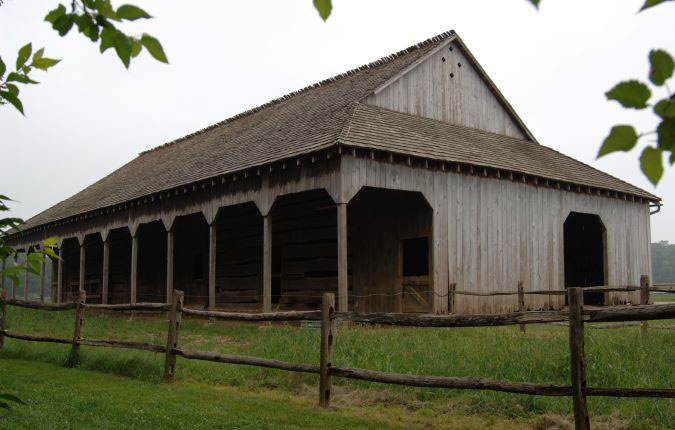
During the time at Fort Wayne, Rachel gave birth to four children, Stephen, Rebecca, Elizabeth, and Rosanna. Rebecca died in 1807, age 2, of an unknown fever. As both John and Rachel contracted malaria while at Fort Wayne, it is likely that Rebecca died from malaria. John and Rachel survived.
LINK TO ENDNOTE: What is malaria?
In 1809, John was appointed Indian Agent at Fort Wayne. The duties of the agent were much more political in nature whereas the factor tended to the business side. John served in this dual role until his resignation on June 30, 1811, citing ill health as a result of malaria.
Following John's resignation, he moved his family to become a "gentleman" farmer in northern Piqua. A fifth child, Juliana, was born in 1811, shortly after their arrival in Piqua.
A year later, in March, President James Madison appointed John to a new post as Indian Agent for the Shawnee in the newly created Piqua Indian Agency.
While John managed the Piqua Indian Agency, Rachel managed the farm and children. The Indian agency was located on the farm, thus John and Rachel often worked together and supported each other.
On June 18, 1812, John's duties expanded with the American declaration of war against Great Britain. He was appointed colonel, and assigned as paymaster and quartermaster for General William Henry Harrison's Army of the Northwest. It was stationed on his farm and locally known as Camp Washington.
In August, John was charged with convening the western Native-American tribes for a council in Piqua. The goal was to reach an agreement of neutrality to prevent the natives from fighting on behalf of the British. Known as the Council of Piqua, it was held on August 15, 1812.
LINK TO ENDNOTE: What Native-American tribes attended the Council of Piqua?
While John's primary responsibility was organizing the council, it introduced him to a long history of negotiating treaties on behalf of the U.S. government. Because of his willingness to listen to the Native Americans, he earned their respect, and this allowed him to maintain cordial relations with the local Native Americans and avoid bloodshed.
Between 1812 and 1815, the Johnstons built a two-story brick home in the Federal style; it was one of the grandest homes in the Upper Miami Valley. A new, larger home was necessary because of the growth of the Johnston family. Ten more children were born between 1813 and 1830. The children comprised ten girls and five boys, with all but one living to adulthood. This was remarkable as 46% of all children living in the United States in the early 1800s did not live to their fifth birthday.
LINK TO ENDNOTE: Who were the Johnston children?
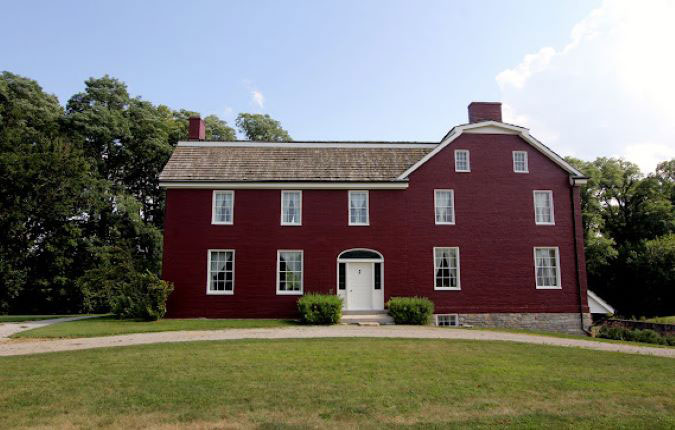
The Johnston family was growing and John's various duties often kept him away. Rachel oversaw the operations of the farm, along with John's mother, Elizabeth; she moved to Ohio about 1812, after the death of her husband. Elizabeth died on August 18, 1834, age 89, and was interred in the farm cemetery.
In November 1816, John's responsibilities were expanded again when he was appointed as Agent for all Ohio Indians. From 1812 — 1842, John was involved in negotiating many of the treaties that led to the removal of all Ohio tribes west across the Mississippi River.
John's official capacity as an Indian agent ended in 1829 following Andrew Jackson's election as president, as Johnston was a Whig and Jackson was a Democrat. Later, his friend, and now, president, William Henry Harrison, asked him to negotiate the Treaty of Sandusky in 1842 that saw the removal of the Wyandot, the last Native-American tribe in Ohio.
With construction of the Miami-Erie Canal, John was appointed a canal commissioner from 1825 to 1839 to supervise its construction across western Ohio.
John and Rachel were founding members of St. James Episcopal Church in Piqua in 1823. John served as a lay reader and led services until the first pastor, Rev. Gideon McMillen, arrived in 1825. Until 1828, services were held in a small, wooden schoolhouse erected near the Johnston cemetery. Rachel served as a Sunday-school teacher, and was a founding member and president of the Piqua Bible Society.
The Johnstons were also the founders of the first subscription school in Miami County, forerunner of the modern public-school system. The building where church services were held on Sundays became the schoolhouse during the week. John and Rachel encouraged their children to obtain as much education as possible with no preference given to either the sons or the daughters.
John was one of the founders of Kenyon College, Gambier, Ohio, in 1824. He was also a trustee for Miami University, Oxford, Ohio, and a member of the Visiting Board for the West Point Military Academy, West Point, New York.
John served as president of the Piqua Agricultural Society and was appointed to the State Board of Agriculture in 1846. He was also instrumental in founding the Miami County Fair.
Other achievements of John include being elected president of the Historical and Philosophical Society of Ohio. He also authored, Recollections of Sixty Years on the Ohio Frontier, and Indian Tribes in Ohio.
Rachel died when she was 55 years old on July 24, 1840, following a brief illness; she was buried on the Johnston Farm. Following her death, John found it increasingly difficult to continue living on the Piqua farm, especially as most of his children left home to marry or enter military service.
LINK TO ENDNOTE: Read about the marriages and military service of the Johnston children!
John continued to live on the Piqua farm until 1848 when he moved to Cincinnati to live with his remaining single daughter, Margaret, and single sons, William and James. In 1849, a cholera epidemic struck Ohio. Over 4,000 people died in Cincinnati, representing 5% of its population. And over 300 people died in Dayton, representing 7% of its population. Margaret contracted cholera on June 21 and died the same day.
LINK TO ENDNOTE: Read about the cholera epidemic of 1849!
LINK TO ENDNOTE: Read John Johnston's diary entry for June 21, 1849!
Following Margaret's death, John moved to Dayton to live at Rubicon Farm, home of his daughter, Juliana "Julia" Johnston Patterson, and her husband, Jefferson Patterson.
In December 1860, John and his son, James, travelled to Washington, DC, to press Congress for reimbursement of expenses incurred throughout his years as the Indian agent in Piqua. He was also there to lobby for a grandson, likely William Graham Jones, to be appointed to West Point. William was the first son of John and Rachel's eldest surviving daughter, Elizabeth Johnston Jones.
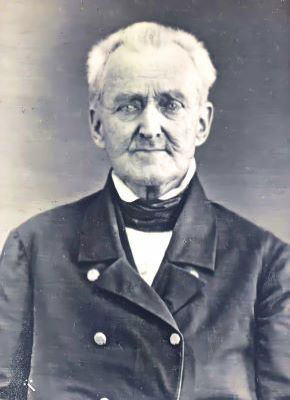
John Johnston died on February 18, 1861, in Washington, DC. He was buried at the Johnston Farm in Piqua next to Rachel.
ENDNOTE - What is a Huguenot?
Huguenots were French Protestants who followed a Reformed or Calvinist doctrine. They were greatly persecuted in Catholic France, leading many to immigrate to other countries.
ENDNOTE - What is an Anglican priest?
An Anglican priest is one that has been ordained in the Church of England, as opposed to the Roman Catholic Church.
ENDNOTE - What Native-American tribes comprised the Northwest Indian Confederation?
The Northwest Indian Confederation was a loose organization of mostly Great Lake Native-American tribes formed at the end of the American Revolution to prevent expansion of white settlement in the Northwest Territory. This territory was ceded by the British to the United States in the 1783 Treaty of Paris that ended the American Revolutionary War. The participating tribes included:
ENDNOTE - What is a Quaker?
Formally known as the Religious Society of Friends, Quakers represent a Protestant Christian denomination founded by George Fox in mid-17th-Century England. It dissented from the established Church of England.
The Quakers generally believe that all people can encounter God directly, without the intervention of ministers or priests. They are usually pacifists, wear plain clothing, do not take oaths, and oppose slavery. Facing persecution from the Church of England, many Quakers migrated to North America shortly after their founding.
ENDNOTE - What is malaria?
Malaria is a disease caused by a parasite. The parasite is typically passed by an infected mosquito through a bite to a human. While it is more common in tropical and subtropical environments, it can be present in any hot and humid environment that attracts mosquitos.
The symptoms of malaria include fever, headache, fatigue, and vomiting. As it worsens, it can cause jaundice (yellowing of the skin), seizures, coma, and death.
ENDNOTE - What Native-American tribes attended the Council of Piqua?
Although it did not gather as many tribes as desired, the Council of Piqua included representatives of the Shawnee, Delaware, Wyandot, Mingwe, and Seneca tribes. Notably absent were the Miami and Potawatomi tribes, who remained ambiguous in their support for the Americans.
ENDNOTE - See the names and birthdates of the 15 Johnston children!
John and Rachel Johnston had 15 children, 14 of whom lived to adulthood. They were:
ENDNOTE - Read about the marriages and military service of the Johnston children!
Marriages of the Johnston children:
Military service of the Johnston children:
(From Conover, 1902, p. 93, and pp. 102 — 103; and the National Archives and Records Administration)
ENDNOTE - Read about the cholera epidemic of 1849!
Cholera is a highly contagious bacterial disease present in contaminated food or water. Typically, the contamination is from the feces of an infected person. It is common in areas where there is a lack of sewage treatment and clean drinking water. Left untreated, cholera causes gastrointestinal symptoms, including severe vomiting and diarrhea. It can strike suddenly and result in death in less than a day.
In 1849, Dayton had a cholera epidemic that began in May and lasted through the summer. Typically, cholera is less active in the cold months of winter.
Burba (1931) suggests that the canal, with travelers from Cincinnati, brought cholera to Dayton in late May 1849. A cholera epidemic had begun in Cincinnati in early May. The recently opened canal made travel easy and convenient. Some of these travelers were on business while others were fleeing the epidemic in the larger city of Cincinnati for the less populous city of Dayton.
Complicating factors for Dayton were a lack of a sewage system, unpaved streets, no hospitals, no board of health, no quarantine laws, no effective drugs, no trained nurses, and few doctors. Several doctors formed a board of health on June 20, 1849. The board, however, had no regulatory power and could only make suggestions on how people should change their behavior to avoid contracting or spreading cholera.
By September 1849, the cholera epidemic disappeared in Dayton. However, the approximately 300 people who died during the epidemic may not be an accurate reflection of the total deaths in the Dayton area. While Dayton city deaths were regularly recorded, they did not include people who returned to their homes and farms in outlying areas, and died from cholera or spread it to family members and neighbors who subsequently died.
ENDNOTE - Read John Johnston's diary entry for June 21, 1849!
"Thursday, my dearest daughter, Margaret Defrees [Johnston], was seized with cholera at one o'clock and died at nine o'clock the same evening, sick only eight hours. My comfort, my star, my hope in this world is taken away. She was most dutiful and affectionate to me in my old age. God's Holy Will be done" (Conover, 1902, p. 103).
Burba, H. (1931, March 8). When the Cholera Plague Swept Dayton. Dayton Daily News. Retrieved March 26, 2022 from the World Wide Web: https://www.daytonhistorybooks.com/page/page/5895433.htm
Conover, C. R. (1902). Concerning the Forefathers: Being a Memoir, with Personal Narrative and Letters of Two Pioneers, Col Robert Patterson and Col John Johnston. New York: Winthrop Press.
Hurt, D. R. (1996). The Ohio Frontier: Crucible of the Old Northwest, 1720 — 1830. Indianapolis: Indiana University Press.
Knepper, G. W, (1989). Ohio and its People.. Kent, OH: The Kent State University Press.
Smith, M. (2020, June). Pandemic Redux: Revisiting Cincinnati's 1849 Cholera in the Age of COVID-19. Origins: Current Events in Historical Perspective.. Retrieved March 26, 2022 from the World Wide Web: https://origins.osu.edu/connecting-history/cincinnati-cholera-covid-19-revisited?language_content_entity=en
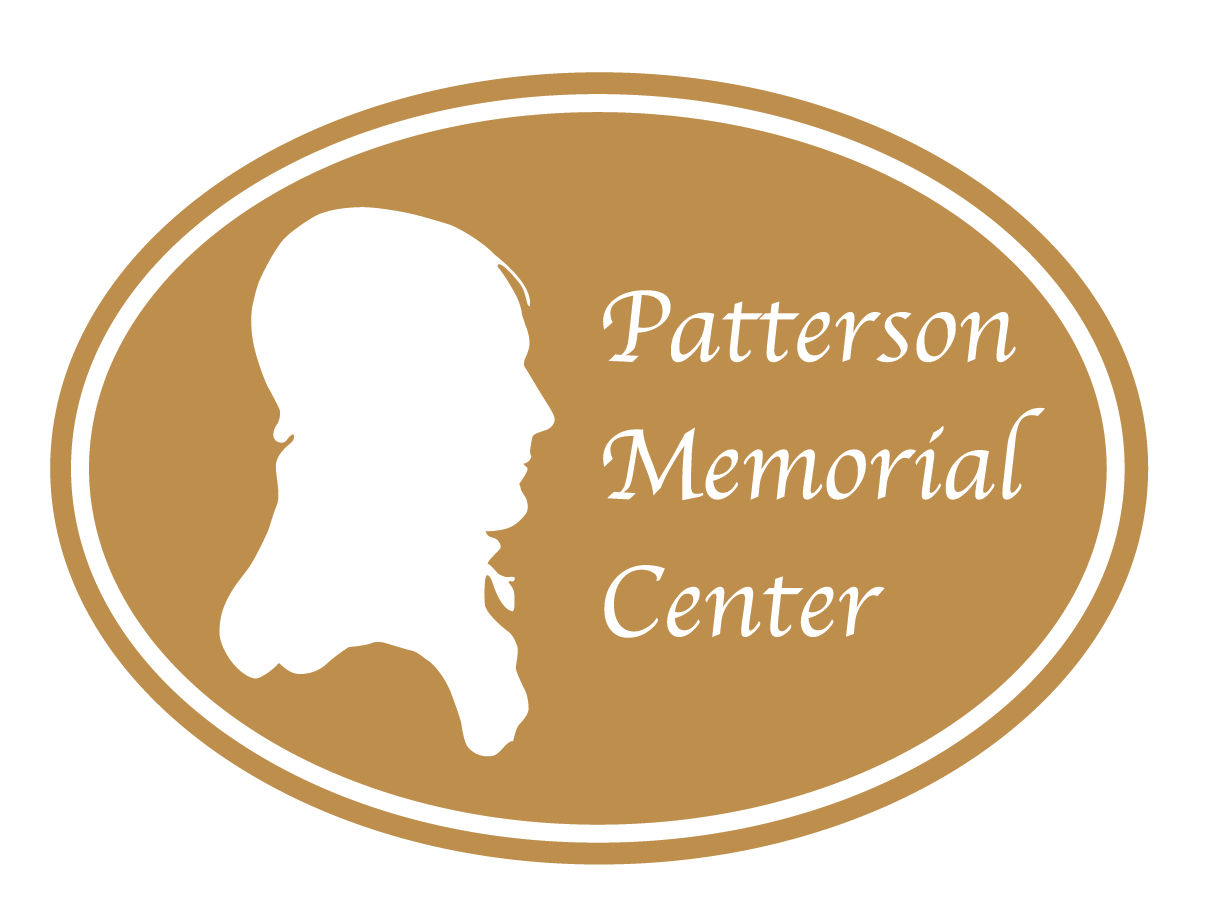
Do you have photos, books or other information that you believe may be pertinent to this website?
Are you interested in contributing to our organization?
